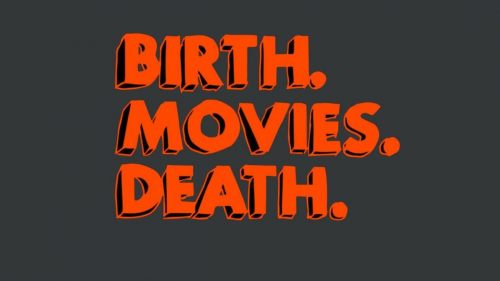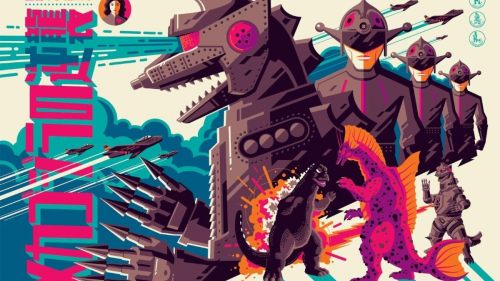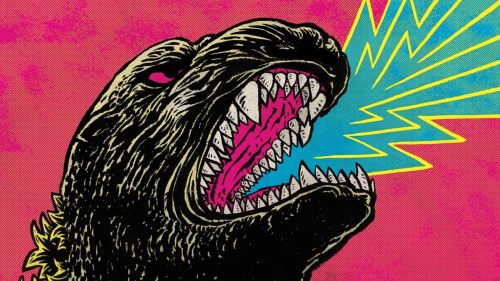Lucky Dragon 5 And The Terrifying Truth That Inspired GODZILLA
A small Japanese fishing boat floats quietly at sea. The fishermen are making music, playing games and sleeping on deck. Suddenly, their tranquil moment is shattered by the sound of an explosion. The fishermen all rush to the railings, looking out across turbulent waters. Piercing white blindness overtakes everything, and their screams are silenced by an unseen, all- consuming force.
That’s the opening scene of Ishiro Honda’s Godzilla, but to Japanese audiences of the time, it was an instantly recognizable tribute to a very recent tragedy. On March 1, 1954, the crew members of the Daigo Fukuryu Maru (or Lucky Dragon 5), a 140-ton fishing boat out of Yaizu, Shizuoka Prefecture, were exposed to fallout from the test explosion of a U.S. hydrogen bomb detonated at Bikini Atoll. The Lucky Dragon tragedy galvanized an emerging movement against nuclear weapons in Japan, spearheaded primarily by housewives in Tokyo’s Suginami Ward; the ill-fated boat emerged as an enduring symbol of protest against the proliferation of weapons capable of eradicating all life from the surface of the planet.
Under the command of an inexperienced 22-year-old captain named Hisakichi Tsutsui, the Lucky Dragon left port on Jan. 22, 1954 with an underpowered engine capable only of 5 knots, and was beset by mechanical malfunction almost immediately. Less than three weeks into its voyage, as it was rounding the southern tip of Midway Island, nearly half of the ship’s 330 fishing lines were caught on coral reefs and lost. Unwilling to return home in failure, Tsutsui chose instead to head south to the Marshall Islands, in hope of finding a plentiful haul of bigeye tuna. No member of the crew was aware that the Japanese Maritime Safety Agency had been alerted by the U.S. government of planned nuclear tests, and that an exclusion zone had been established around Bikini Atoll extending eastward to longitude 166 16.
By the end of February, the Lucky Dragon’s supplies were exhausted and fuel was nearly depleted. Noting their longitude at 166 18 (still safely, though obliviously, outside the exclusion zone), the crew planned for one final day of fishing on March 1 before returning home to port. At 6:45 am on “the Day the Sun Rose in the West,” a blast of light cut through the morning darkness. Crewman Matakichi Oishi described seeing the detonation: “A yellow flash poured through the porthole. Wondering what had happened, I jumped up from the bunk near the door, ran out on deck and was astonished. Bridge, sky and sea burst into view, painted in flaming sunset colors.”
He was witnessing Castle Bravo, the first ever test of a dry-fuel thermonuclear device. And, oh man, did it go completely wrong. The bomb’s engineers at the Los Alamos Laboratory miscalculated, and instead of the bomb blast delivering a planned yield of 6 megatons, it yielded an unimaginable FIFTEEN megatons! It was the biggest explosion ever caused by human beings, and over 1,000 times more powerful than the bombs dropped on Hiroshima and Nagasaki.
The Lucky Dragon 5 survived the initial blast, but soon, a mysterious cloud of white “death ash” began to softly rain down on the ship. Later tests determined it was atomized coral, the ghostly remains of the habitat they were there to fish. Oishi recalled:“The top of the cloud spread over us…. Two hours passed…. White particles were falling on us, just like sleet. The white particles penetrated mercilessly – eyes, nose, ears, mouth. We had no sense that it was dangerous.” For six hours after, they patiently hauled in their fishing lines before weighing anchor.
That evening, the crew members began to feel nauseous, exhibiting early symptoms of radiation poisoning. By the time they reached Yaizu on March 14, they were covered in burns, bleeding from their gums and barely able to open their eyes. The 23 crew members were quarantined outside the city, and all their clothing and belongings were buried. Meanwhile, the fish they brought back with them were somehow accidentally unloaded and taken to markets across Tokyo. The government soon began a frantic search to recover the entirety of the catch, but by the time it was concluded, at least two full tuna had been sold and likely consumed.
In the aftermath of the Castle Bravo test, the Ministry of Health and Welfare concluded that 856 Japanese vessels were exposed to radiation from the detonation. The Japanese fishing industry was crippled. Prices plunged, and between March and December of 1954 alone, over 75 tons of tuna were destroyed after being found unsafe to consume. And America’s response? The Atomic Energy Commission accused the Lucky Dragon of being a spy vessel, sent to discover military secrets. They denied any negative effects from the test, claiming “there [was] negligible hazard, if any, in the consumption of fish caught in the Pacific Ocean outside the immediate test area subsequent to tests.” At the very same time however, America instituted much tighter regulations on all imported fish.
The Lucky Dragon’s chief radio operator, Aikichi Kuboyama, died in September of 1954 at age 40, the first Japanese victim of a hydrogen bomb. The US government eventually gave a meager two million dollars to the Japanese government as compensation for unspecific damages resulting from the Castle Bravo test. A diplomatically positioned ex-gratia statement made it clear that America was assuming no responsibility and that the payment was merely intended as a sympathetic gesture. The whole incident caused a tremendous amount of unrest in Japan. A large number of outraged Japanese citizens identified closely with the crew of the Lucky Dragon 5, and over 400,000 people attended Kuboyama’s funeral. Following this incident, the anti-nuclear movement quickly became a powerful voice in Japan. And then in November, Godzilla was released.
Beyond the opening scenes, which encapsulate the tragedy of the Lucky Dragon 5, director Ishiro Honda’s film grapples with the consequences of nuclear weapons with more direct intentionality, gravity and integrity than any film we would see for the next thirty years. Having been drafted into the Imperial Japanese Army, Honda spent the last six months of the war as a prisoner in China. In 1946 he was repatriated through Hiroshima, witnessing firsthand the aftermath of the nuclear attack. Those traumatic sights left a lasting impression which would be filtered throughout his entire body of work. He deliberately staged Godzilla’s destruction of Tokyo as a slow-motion, personified version of a rolling nuclear attack like those perpetrated against Japan.
Watching Godzilla today, the weighty moral quagmires that form the backbone of the narrative still feel urgent and unresolved. The film continues to resonate in part simply due to the masterful artistry and applied craft of Honda, special effects genius Eiji Tsuburaya and composer Akira Ifukube. The insane originality of their vision still pops with a vibrancy lacking from contemporary CGI-ridden blockbuster still-births. But I think primarily the film still stands out - even from its 27 increasingly fun and outlandish sequels - because it struggles so earnestly with large-scale questions of guilt and responsibility.
In Godzilla, a film that boldly accepts our reality as one in which human beings can willfully tear apart and destroy the fundamental particles of the universe, a scientist character played by Akihiko Hirata has created an Oxygen Destroyer that can disintegrate oxygen atoms. After Godzilla is awoken from his underwater sleep by a nuclear detonation, it becomes clear that the Oxygen Destroyer is likely the only weapon that can get rid of him. The scientist agonizes over the decision to use his new invention, terrified by the possibility that, once introduced to the world, such a weapon could never truly be contained. Ultimately, he resolves to use it, but not before burning the records of his life’s work to prevent others from abusing such destructive knowledge. After Godzilla’s defeat, he sacrifices himself, ensuring that the secrets of the Oxygen Destroyer would die with him.
In later Godzilla movies, humans are often forced to manipulate one giant monster into helping defeat another, more immediately dangerous one. But in the end, they’re still always stuck with a giant goddamn monster to deal with. The abundance of crazy creatures in the Godzilla franchise reflects the paranoid politics of mutually assured destruction during the Cold War. Godzilla himself represents the potential for the complete destruction of everything, and the unfathomable consequences of fucking around with forces powerful enough to destroy all life on Earth.
The movie still resonates because that omnipresent threat of annihilation hasn’t gone away. After the disaster at the Fukushima Daiichi nuclear power plant in 2011, the Lucky Dragon 5 embarked on a symbolic new voyage, acting as a vivid reminder of the almost incomprehensible dangers of “peaceful” nuclear technology. If that threat of total extinction doesn’t ring with the same urgency that it did during the Cold War, it’s partly because we’ve just become accustomed to it, grown up with it as a simple fact of modern life. Over time, we've come to accept the idea that we’re irreparably ruining this planet, an idea that decades ago had already found expression in 27 incredible movies starring a guy in a rubber monster suit.
Humans won’t be here forever. Maybe we don't really belong here at all anymore. Maybe ours is a world intended for giant monsters instead.
This was originally published in the "Beasts vs. Bots" issue of Birth.Movies.Death. in honor of Guillermo del Toro's Pacific Rim, in Alamo Drafthouse theaters now. Also this is the last week you can catch Pacific Rim at the IMAX!



